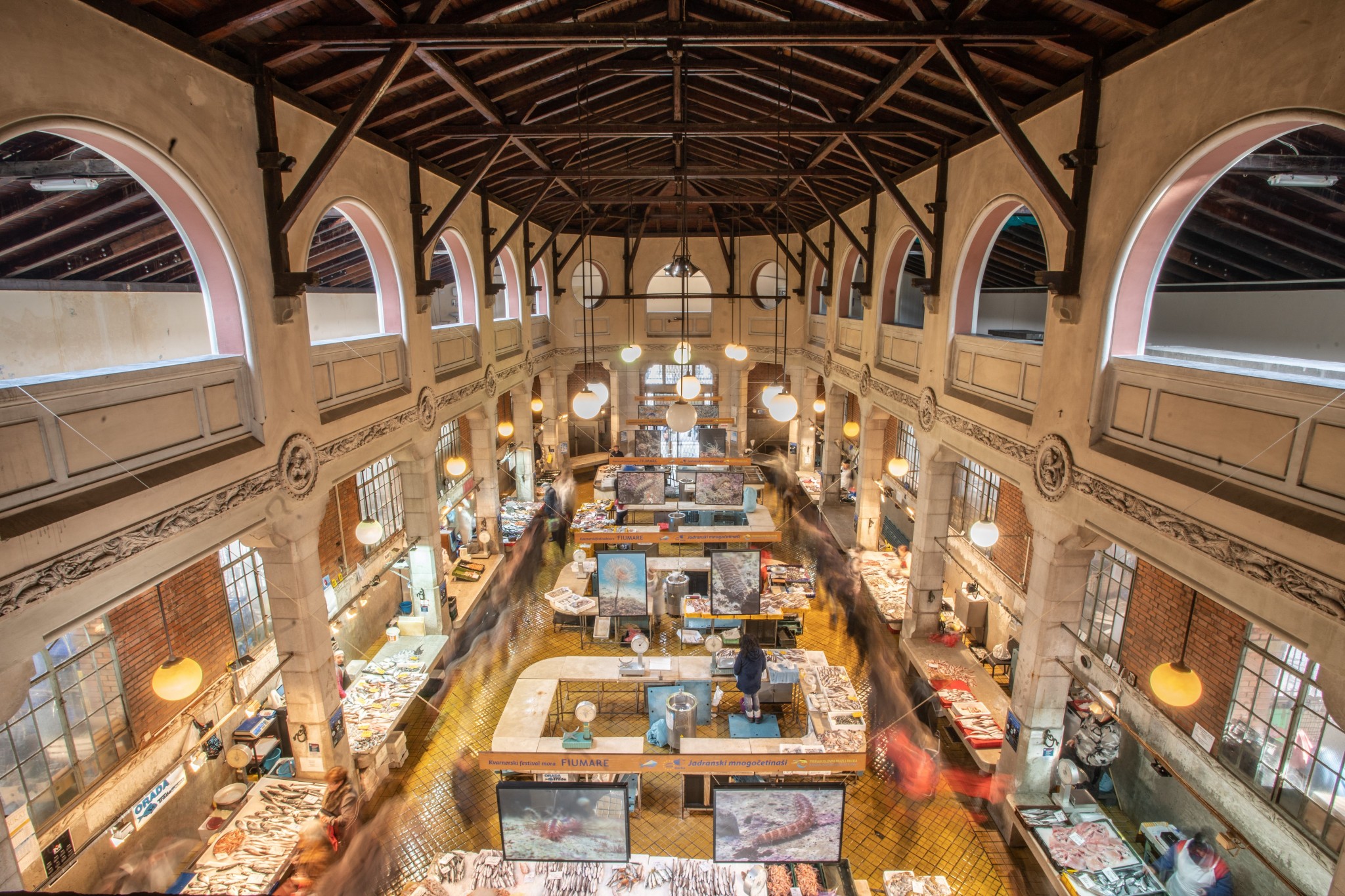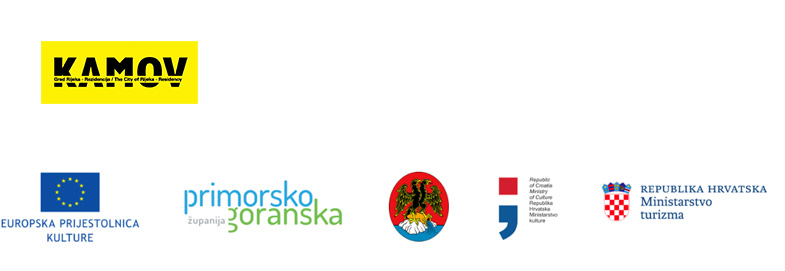Rijeka fish market
Not far from the dock where, historically, the local fishermen would unload their catch, stands the main city market of Rijeka and the fish market within, dedicated in 1915.
The architect of the triple-nave basilica-style building with a loft gallery is one of Rijeka’s own Carlo Pergoli, and the Venetian sculptor Urbano Bottasso constructed the stone decoration with maritime flora and fauna themes, giving it an Art Nouveau appearance.
The sale of fish was organised in three places: the main floor hall, the gallery as an additional sale space in cases of excessive quantities of catch, and the lateral outer porches for outdoor sale.
Apart from the fish market, the two city market pavilions represented advanced urban and communal structures which were the result of a plan conceptualised for the purpose of a more economically viable provision of goods to the citizens, and simultaneously as a meeting point, a forum of sorts for a coastal city.
In the times of increasingly present globalisation, the city markets are a type of outdoor museums, museums of identity and sites showcasing local traditions. The way of life changed significantly over the last few decades, and the fish market is trying to adapt to those changes by following suit.
At the Rijeka fish market, when the catch is good, it’s still “a land of plenty” in terms of a quality and diverse offer, when different kinds of fish and customers with pockets of varying depth can be found.
It is a mirror to the city, but also a keeper of local knowledge and entrepreneurial spirit. It is a place of communication, exchange of impressions and sentiments and a mixing of cultures.
Bibliography:
Glavočić, Daina et. al: Arhitektura secesije u Rijeci
Matejčić, Radmila: Kako čitati grad: Rijeka jučer, danas
Musić, Ivo (Ed.): Gradska tržnica Rijeka : 1881. – 1891.
Šarić Žic, Ivana i Kocković Zaborski, Tanja: Tržnica – trbuh grada

Faruk Šehić
Faruk Šehić was born in Bihać in 1970. Until the war in Bosnia and Herzegovina broke out, he was a student of veterinary medicine in Zagreb. He was in the Bosnian Army and once gravely wounded.
He published the following works: “Pjesme u nastajanju“ (“Emerging Poems”) of 2000, “Hit depo“ of 2003, “Pod pritiskom“ (“Under Pressure”) of 2004, “Transsarajevo“ of 2006, “Hit depo, Pod pritiskom, Transsarajevo, Apokalipsa iz Recycle bina“ (“Hit Depo, Under Pressure, Transsarajevo, Apocalypse of Recycle Bin”) of 2007, “Knjiga o Uni“ (“The Book About Una”) of 2011, “Moje rijeke“ (“My Rivers”) of 2014, and “Priče sa satnim mehanizmom“ (“Stories With A Clock Mechanism”) of 2018. Literary critics often refer to him as the voice of the “run-over generation” of writers born in 70s’ Yugoslavia, marked in biography and in their works by the wars and the disintegration of a common state.
He won the “Meša Selimović” award in 2011 for best novel of the region of Bosnia and Herzegovina, Serbia, Croatia and Montenegro for the novel “Knjiga o Uni”, and the European Union Prize for Literature – “EUPL 2013.”. His works have been translated into ten languages.
He works as a journalist and columnist in the reputable Sarajevo journal BH Dani. He lives in Sarajevo and Poznan.
More on the author and his work

The programme was implemented with the support of the “Kamov” residence.
